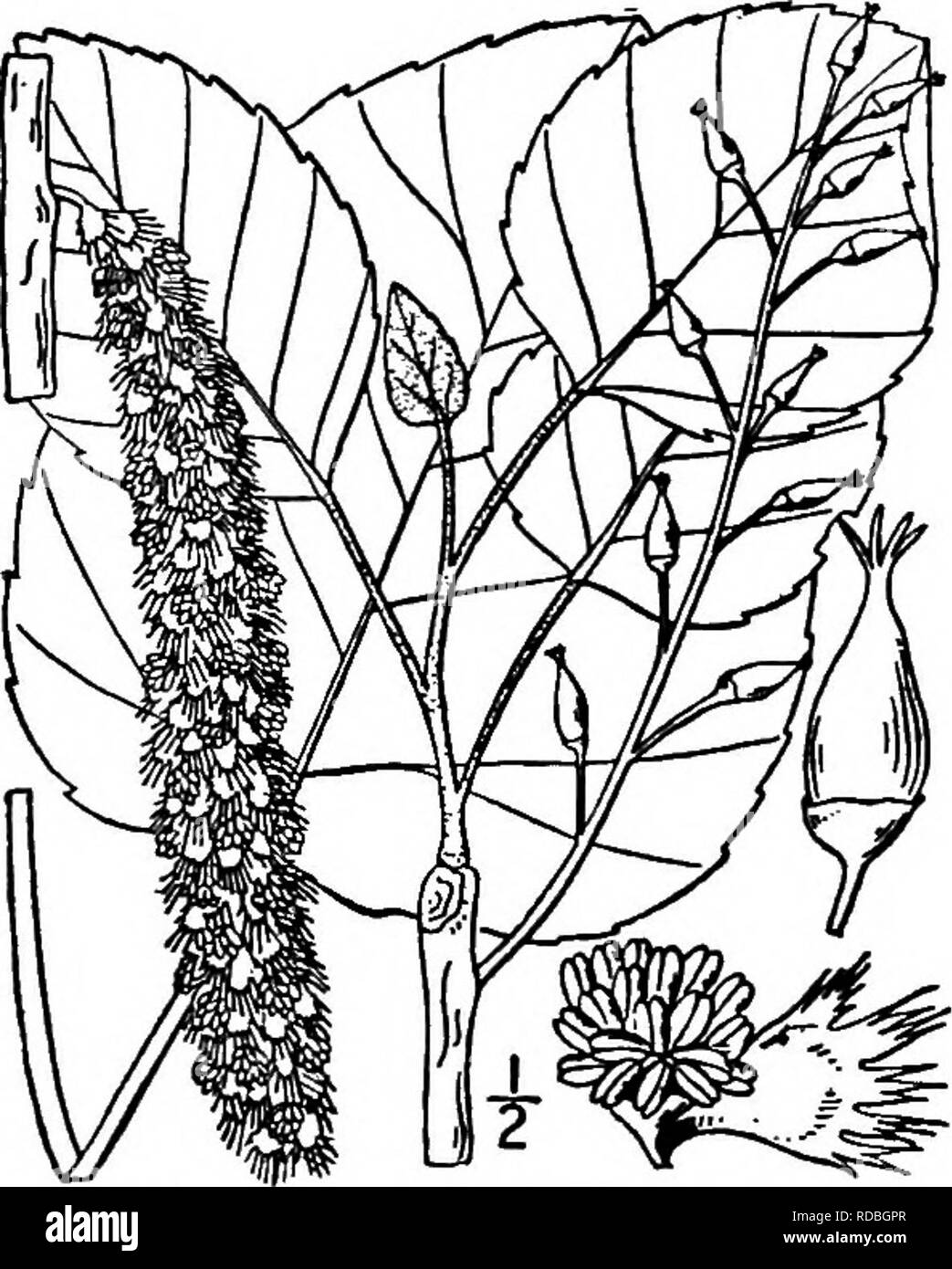. North American trees : being descriptions and illustrations of the trees growing independently of cultivation in North America, north of Mexico and the West Indies . Trees. 168 The Poplars leaves in March, April, or May. The staminate catkins are about 5 cm. long, the pistillate longer, at least in fruit. The Abele tree is of rapid growth. The wood is light, soft, and weak, difficult to split and to ignite, and is used in Europe for rollers, packing-cases, and floor- ing; in ancient times it was used for shields, for which it was well adapted, yielding xmder a blow without splitting. 2. SWAM

Image details
Contributor:
The Book Worm / Alamy Stock PhotoImage ID:
RDBGPRFile size:
7.1 MB (385.5 KB Compressed download)Releases:
Model - no | Property - noDo I need a release?Dimensions:
1416 x 1764 px | 24 x 29.9 cm | 9.4 x 11.8 inches | 150dpiMore information:
This image is a public domain image, which means either that copyright has expired in the image or the copyright holder has waived their copyright. Alamy charges you a fee for access to the high resolution copy of the image.
This image could have imperfections as it’s either historical or reportage.
. North American trees : being descriptions and illustrations of the trees growing independently of cultivation in North America, north of Mexico and the West Indies . Trees. 168 The Poplars leaves in March, April, or May. The staminate catkins are about 5 cm. long, the pistillate longer, at least in fruit. The Abele tree is of rapid growth. The wood is light, soft, and weak, difficult to split and to ignite, and is used in Europe for rollers, packing-cases, and floor- ing; in ancient times it was used for shields, for which it was well adapted, yielding xmder a blow without splitting. 2. SWAMP POPLAR — Populus heterophyUa Linnaeus The Swamp poplar, or Downy poplar, inhabits wet, rich soil, and occurs from Connecticut to New Jersey, south to Georgia, westward to Missouri, Arkansas, and Louisiana. In the southwestern parts of its range it is sometimes about 30 meters high and has a trunk a meter in diameter. The thick bark is brown and fissured, or broken into loose, long, and narrow plates. The stout yoimg twigs are velvety, becoming gray to reddish brown, and somewhat shining. The slightly resinous leaf- buds are ovoid, pointed, and about 6 mm. long. The long-stalked leaves are 12 to 15 cm. long, or those of young shoots much larger; they are broadly ovate, firm in texture, very velvety when yoimg, blunt or bluntish, finely toothed, rounded to heart-shaped at the base, when mature dark green, dull and smooth, or a little cottony on the upper side, smooth or nearly so beneath; those of young shoots are sometimes persistently velvety; the narrow stipules are 3 cm. long or less. The tree flowers, according to latitude, in March, April, or May, before the leaves un- fold. The staminate catkins are stout, stalked, densely many-flowered, 2.5 cm. thick or less, and 7 to 10 cm. long, their scales cut into nu- meroos fiUform lobes, the stamens 20 or fewer. The smooth pistillate catkins are several-flowered racemes, 5 cm. long or more, elongating in fruit to several times